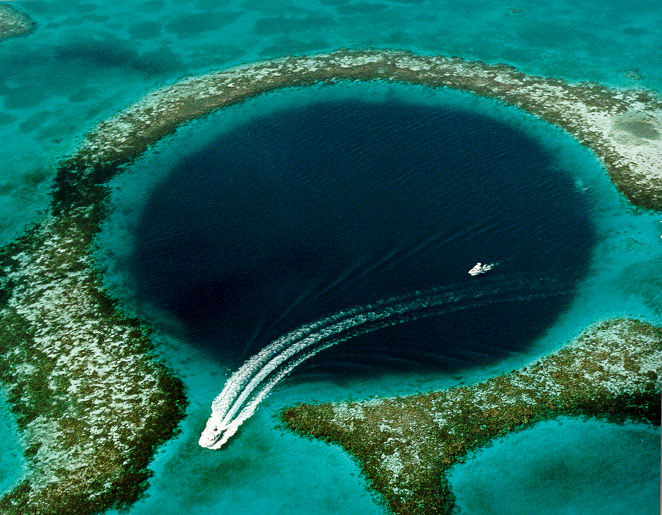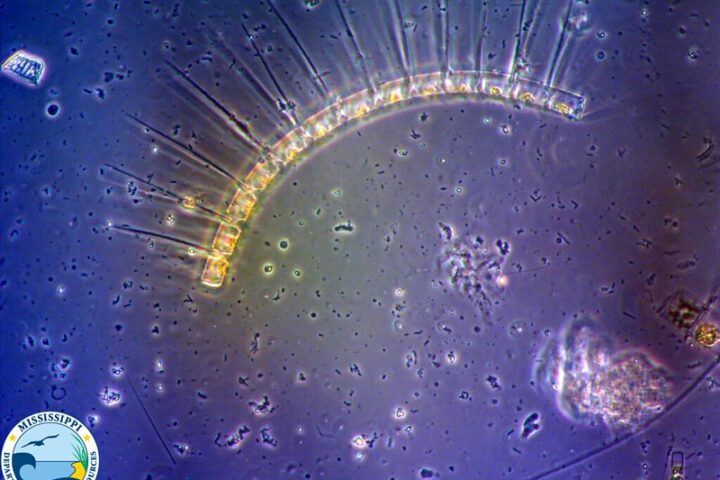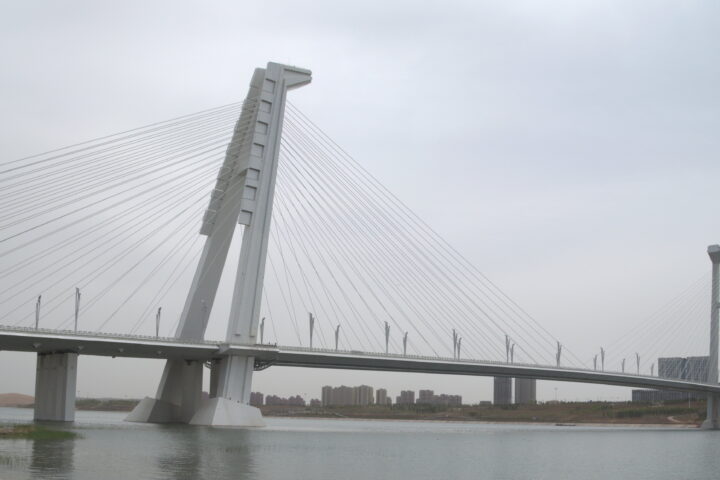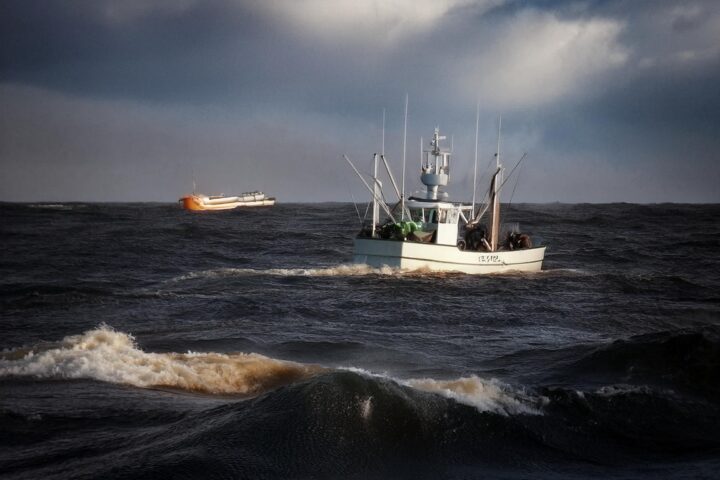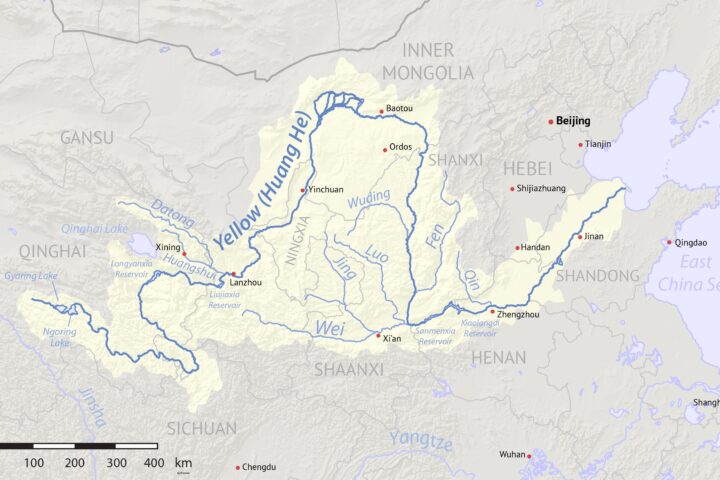Source: Great_Blue_Hole_By U.S. Geological Survey (USGS)
Diving Deeper into Belize’s Underwater Marvel
The Great Blue Hole, a yawning chasm in the crystalline waters off the coast of Belize, is a sight that has captivated explorers and dreamers alike. Its perfect circular shape and intense blue hue render it an otherworldly spectacle. But beyond its aesthetic allure lies a complex geological history and an ecosystem teeming with unique biodiversity.
Formation: A Symphony of Geological Forces
Popular belief often attributes the Great Blue Hole’s creation solely to glacial cycles. However, recent scientific investigations have unveiled a more intricate narrative. While the last ice age undoubtedly played a crucial role, the hole’s formation is a testament to the interplay of multiple geological forces.
- Subterranean Rivers: During the Pleistocene epoch, when sea levels were significantly lower, the region was home to an extensive cave system. These caverns were carved by subterranean rivers, gradually expanding over millennia.
- Sea Level Rise: As the ice age ended and global temperatures increased, sea levels rose dramatically. The once-dry cave system became inundated, transforming into a vast underwater cavern.
- Collapse: Due to the weight of the water and the inherent instability of limestone, the cave’s roof eventually collapsed, forming the iconic circular depression we know today.
- Tectonic Activity: While less emphasized, subtle tectonic shifts in the region might have contributed to the cave’s formation and subsequent collapse, adding another layer of complexity to this geological marvel.
A Biodiversity Hotspot
Despite its challenging environment, the Great Blue Hole is a thriving ecosystem. The upper layers of the water column are bathed in sunlight, supporting a diverse array of marine life, including colorful coral formations, a variety of fish species, and playful dolphins.
However, as one descends deeper into the hole, the environment becomes increasingly hostile. Oxygen levels dwindle, and the pressure intensifies. Yet, even in these extreme conditions, life persists. Unique species of bacteria and other microorganisms have adapted to thrive in this inhospitable realm.
Conservation Challenges
The Great Blue Hole, like many of the world’s natural wonders, faces significant conservation challenges. Climate change, overfishing, and irresponsible tourism pose serious threats to its delicate ecosystem. Efforts to protect this irreplaceable treasure are crucial.
- Marine Protected Areas: Establishing and enforcing marine protected areas around the Great Blue Hole is essential to safeguard its biodiversity.
- Sustainable Tourism: Promoting responsible tourism practices can help minimize the hole’s ecological footprint while generating revenue for conservation efforts.
- Climate Action: Addressing climate change is vital to protect the Great Blue Hole from rising sea levels and ocean acidification.
The Great Blue Hole: An Ongoing Mystery
While scientists have made significant strides in understanding the Great Blue Hole, many questions remain unanswered. The hole’s exact age, the precise mechanism of its collapse, and the full extent of its biodiversity are still subjects of ongoing research.
As technology advances, researchers will undoubtedly uncover new insights into this extraordinary natural wonder. Until then, the Great Blue Hole continues to captivate our imagination and inspire us to protect our planet’s precious ecosystems.
A Hydrographic Marvel
Beyond its aesthetic appeal, the Great Blue Hole is a complex hydrographic system. The water column within the hole is stratified, with distinct layers characterized by varying temperature, salinity, and oxygen levels. The upper layer, bathed in sunlight, supports a vibrant ecosystem. However, as depth increases, light penetration diminishes, leading to a dramatic decrease in photosynthetic organisms.
This stratification creates a unique habitat for a diverse range of marine life. Pelagic species, such as sharks and rays, frequent the upper layers, while more specialized creatures, like certain species of fish and invertebrates, have adapted to the harsher conditions of the lower depths. The hole’s hydrodynamics, influenced by ocean currents and tides, play a crucial role in shaping its ecosystem.
A Haven for Marine Life
The Great Blue Hole is renowned for its abundance of marine life. While the upper layers teem with colorful fish, corals, and other invertebrates, the lower depths are home to more unusual creatures. Nurse sharks, often found resting on the cavern floor, are a common sight. The hole is also a significant feeding ground for a variety of shark species, including Caribbean reef sharks and bull sharks.
Beyond the vertebrates, the hole supports a diverse invertebrate community. Sponges, crustaceans, and mollusks find refuge in the various nooks and crannies of the underwater cave system. Some of these species may be endemic to the Great Blue Hole, highlighting the site’s unique ecological importance.
Conservation and Future Prospects
Preserving the Great Blue Hole is a paramount challenge. Its delicate ecosystem is vulnerable to a host of threats, including climate change, pollution, and unsustainable tourism. Rising sea levels pose a significant risk, as they could alter the hole’s hydrology and impact its marine inhabitants.
To safeguard this natural wonder, a multi-faceted approach is necessary. Establishing and enforcing marine protected areas, promoting sustainable tourism practices, and investing in scientific research are essential steps. Additionally, reducing carbon emissions to mitigate climate change is crucial for the long-term health of the Great Blue Hole and the broader marine environment.
The Great Blue Hole is more than just a breathtaking natural spectacle; it is a complex ecosystem teeming with life and a repository of geological history. As our understanding of this extraordinary place grows, so too does our responsibility to protect it for future generations.
The Great Blue Hole: A Catalyst for Exploration
The Great Blue Hole has served as a catalyst for exploration and scientific discovery. Countless expeditions have ventured into its depths, uncovering new information about its geology, hydrology, and marine life. These explorations have not only expanded our knowledge but have also inspired a new generation of scientists and oceanographers.
As technology continues to advance, we can expect even more groundbreaking discoveries about the Great Blue Hole. Autonomous underwater vehicles (AUVs) and other advanced tools are enabling researchers to explore areas previously inaccessible to humans. These technological advancements hold the promise of unlocking the remaining secrets of this enigmatic underwater world.
Conclusion
The Great Blue Hole stands as a testament to the power and beauty of nature. Its formation, a complex interplay of geological forces, has resulted in a unique and awe-inspiring underwater landscape. The hole’s rich biodiversity, from the vibrant coral reefs of its upper layers to the mysterious depths below, underscores its ecological significance.
Preserving this natural wonder requires a concerted effort from governments, scientists, and the global community. By understanding the threats facing the Great Blue Hole and implementing effective conservation measures, we can ensure that this extraordinary site continues to inspire and amaze for generations to come.
Sources:

